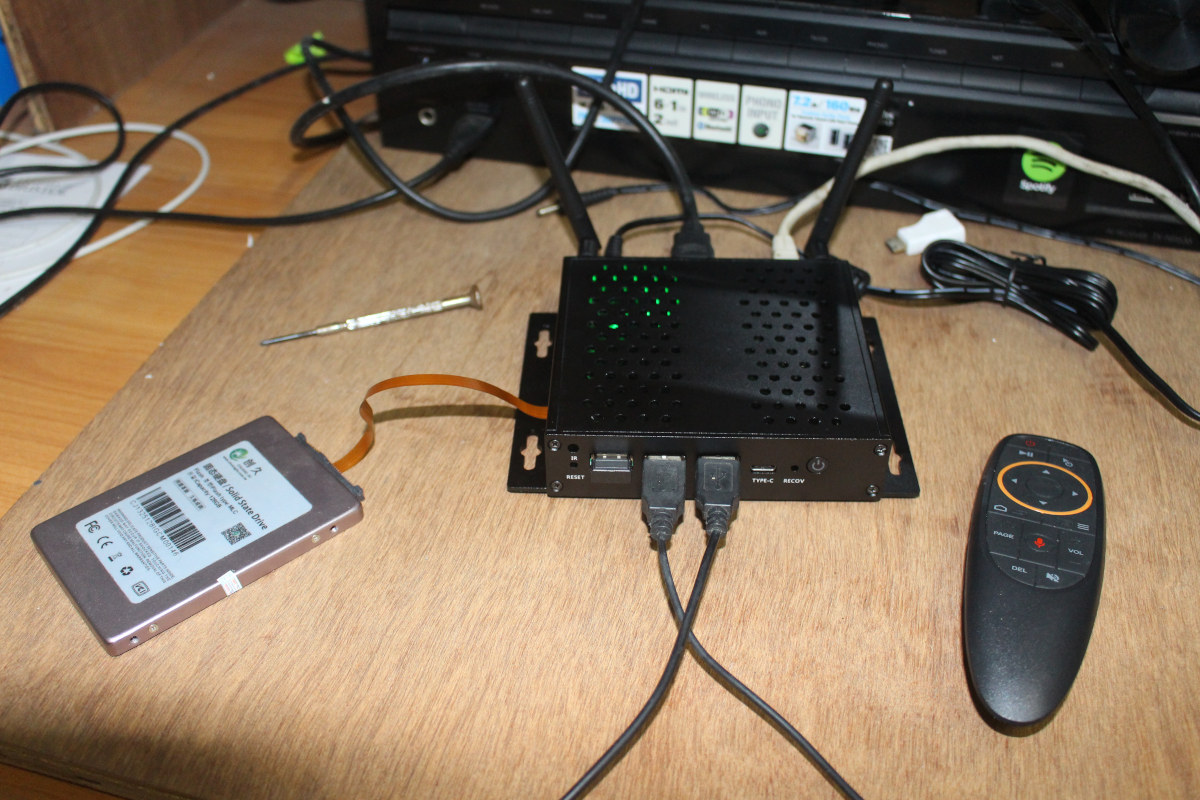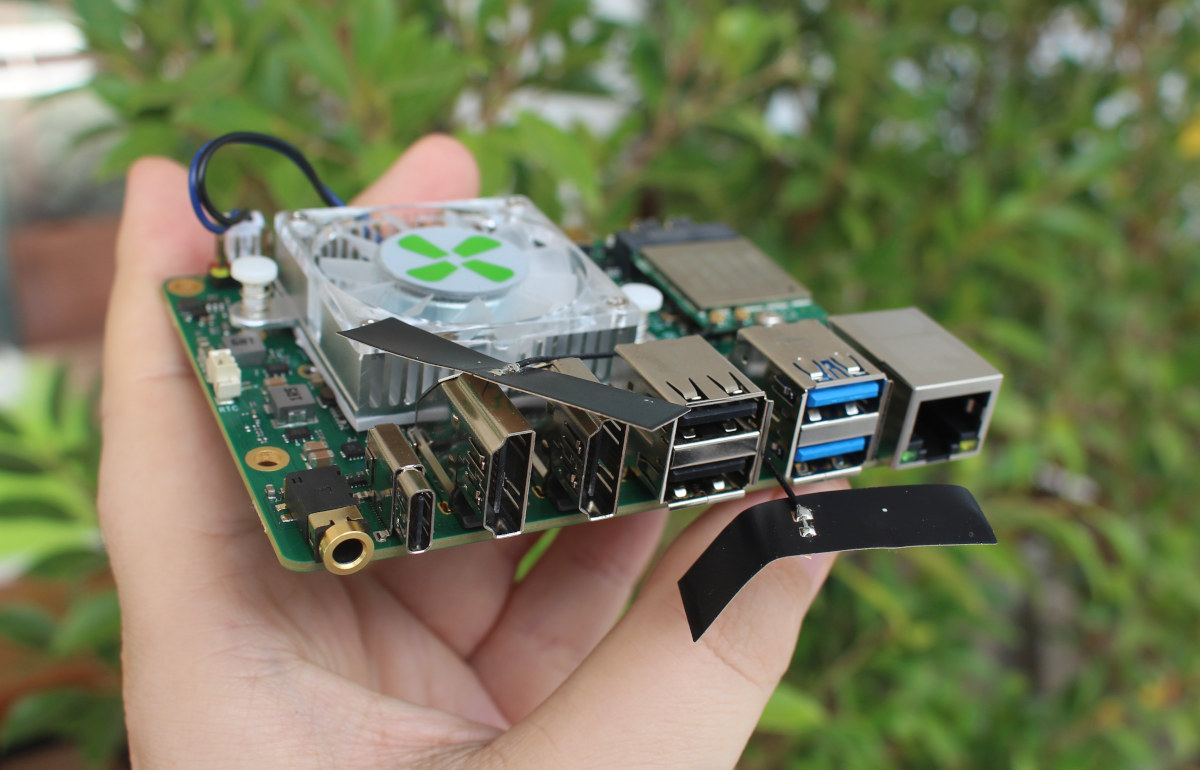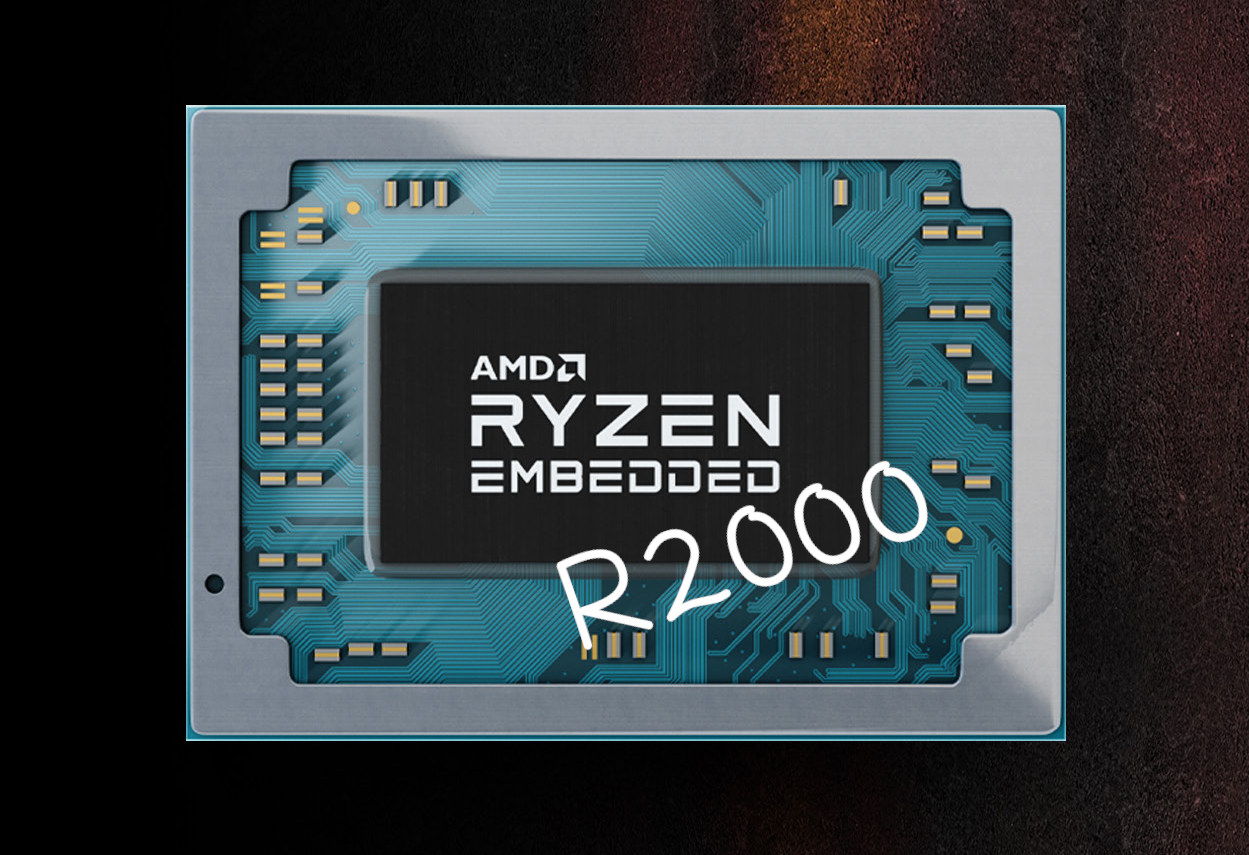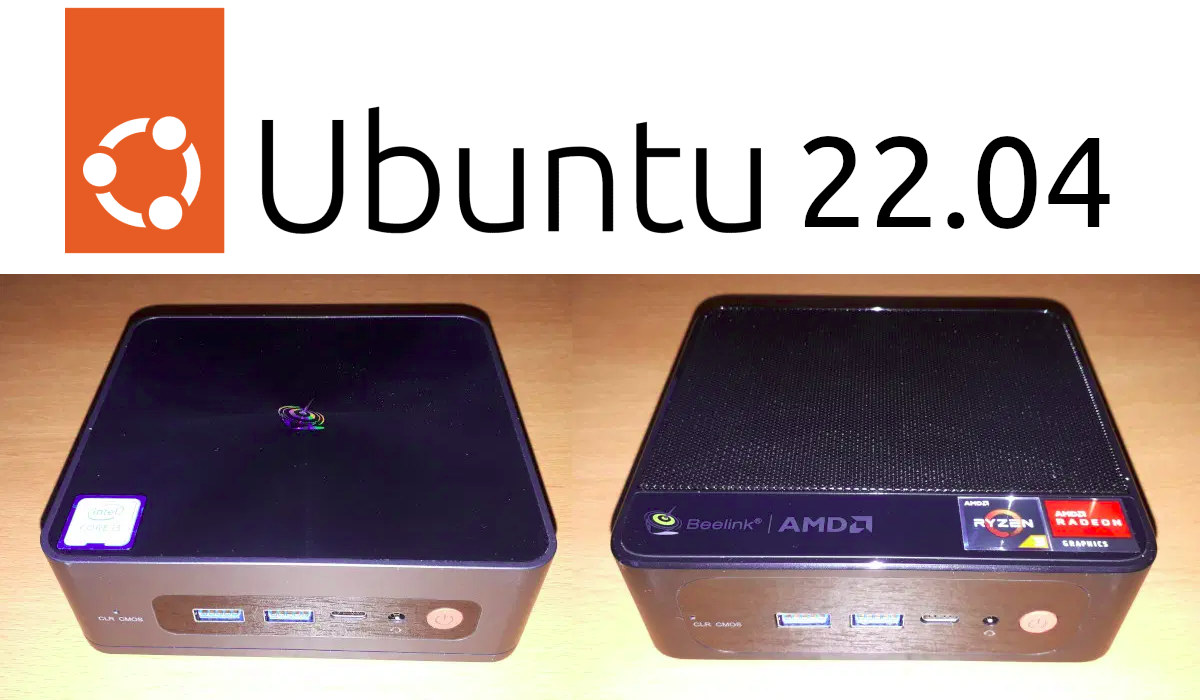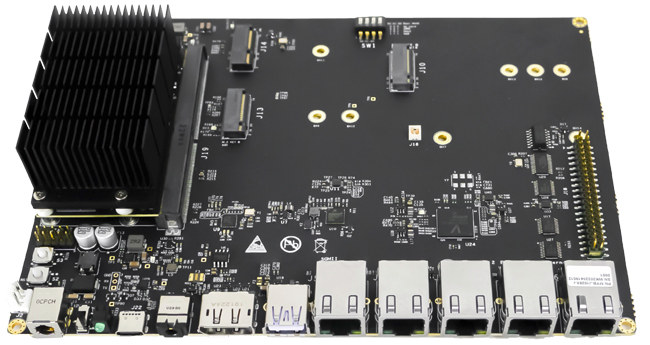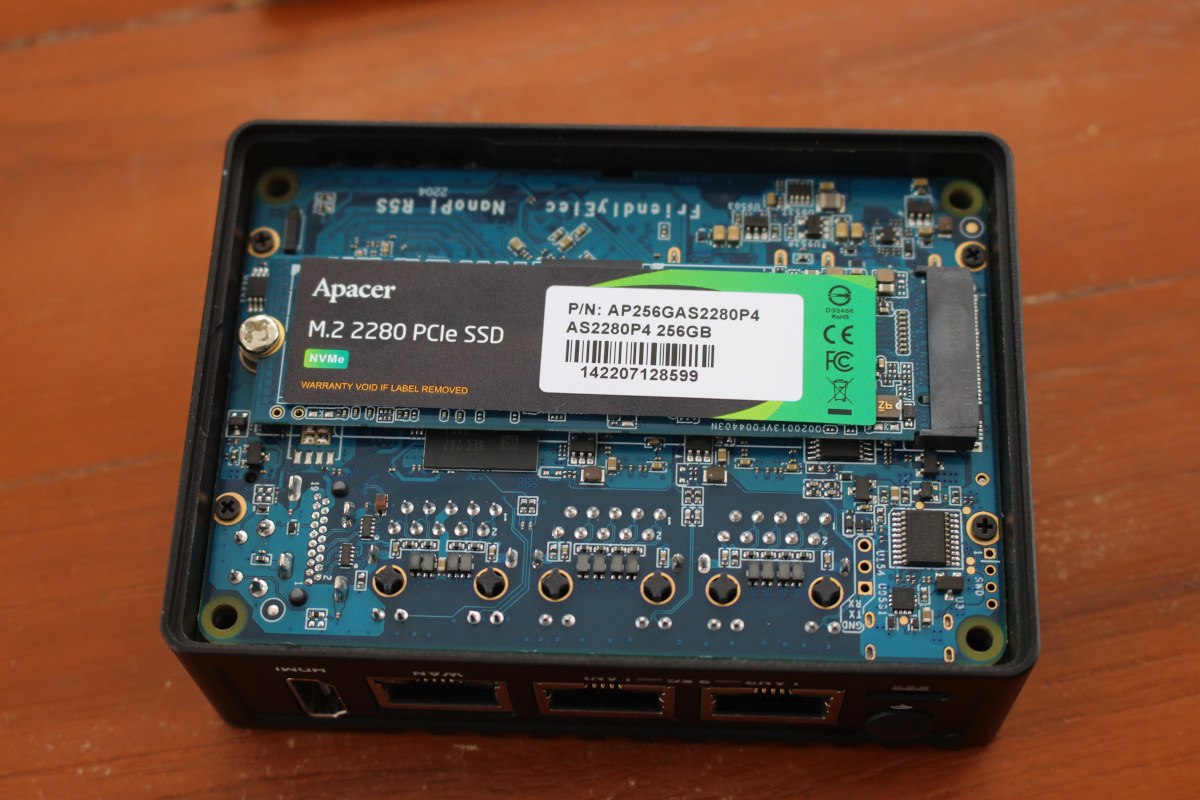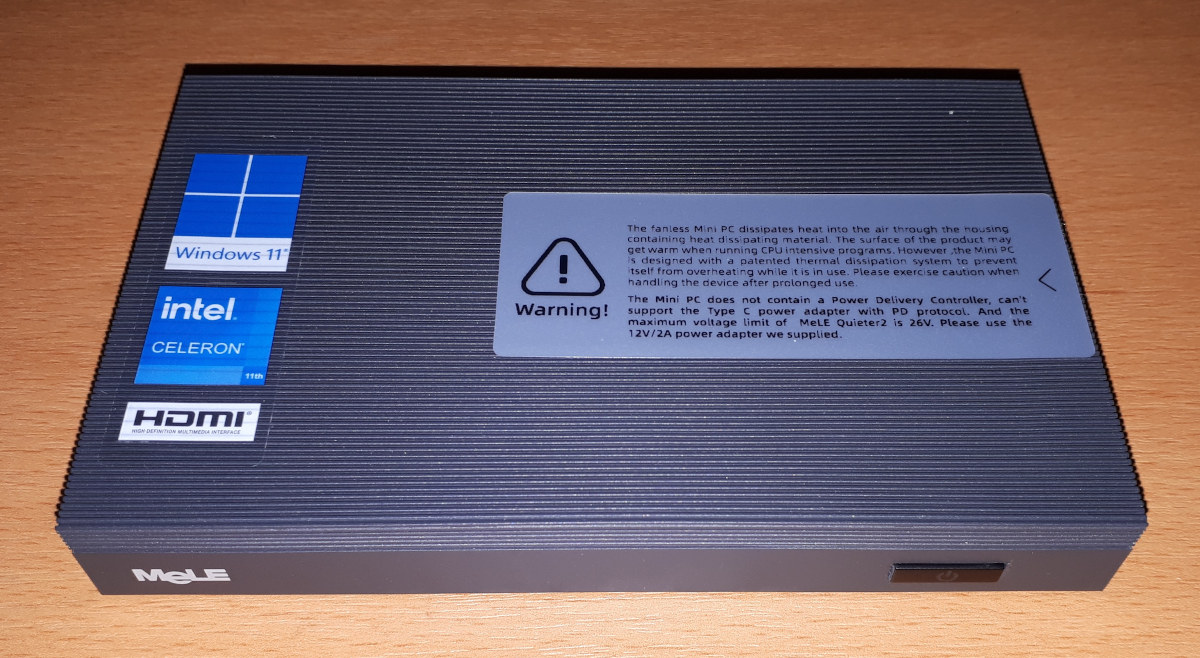I’ve written the first part of Mekotronics R58 review last month with an unboxing, teardown, and first boot with 3D graphics benchmarks. I’ve now had more time to play with Android 12 on the Rockchp RK3588 mini PC, so I’ll report my experience with the device. User interface and settings As already mentioned, the box ships with Android 12 for TV and the stock launcher. The Google Play store is working, and I had no troubles installing all apps I needed for the review. Most of the settings are pretty much standard. While the first time, I used Ethernet, and also tried WiFi 6 connecting the R58 to Xiaomi Mi AX6000 router. It worked but not without some effort, as initially, all I got were messages like “Couldn’t find SSID” both with 2.4GHz and 5GHz SSIDs. It turned out I had to disconnect the Ethernet to make WiFi work, and […]
ROCK 5B developer edition preview – Part 1: Unboxing and first boot to Debian 11
Radxa ROCK5 Model B (aka ROCK 5B) is one of the most anticipated Rockchip RK3588 single board computers due to its features set and relatively affordable price. It was first showcased in January, but it’s taking a while as the Cortex-A76/A55 SoC is a complex beast. The good news is that the public launch is getting closer as Radxa sent “developer edition” samples to developers and enthusiasts for a “debug party”. I was one of the recipients so, in this post, I’ll have a closer look at the latest revision of the board, and give it a quick try first before going into more details in the second of this preview. ROCK5 Model B unboxing I received the 16GB RAM version which should be the same for all board part of the “developer edition batch. Developers are invited to submit reports to Radxa forums, and since those are public, anybody […]
Imagination unveils IMG RTXM-2200 32-bit RISC-V real-time “Catapult” CPU
Imagination IMG RTXM-2200 32-bit RISC-V real-time CPU core is the first member of the company’s Catapult family comprised of four distinct RISC-V families for dynamic microcontrollers, real-time embedded CPUs, high-performance application CPUs, and functionally safe automotive CPUs. The company says it’s a highly scalable real-time, deterministic, 32-bit embedded CPU, that is feature-rich and flexible in design for mainstream devices, but, excuse the pun, leaves most of the details to your imagination… The new core will mostly be used as a helper core (aka co-processor) in more complex SoCs for 5G modems, cellular base stations, networking solutions for data transfer, packet management, and storage controllers, but may also find its way into smart meters. In all fairness, we do have some limited technical details with L1 cache sizes up to 128KB, I/D TCM sizes up to 128KB, and PMA regions. The real-time core will also include optional features such as single-point […]
AMD unveils Ryzen Embedded R2000 Series processors with up to four cores, quad-display support
As expected, AMD has now launched the Ryzen Embedded R2000 series processors that build up on the earlier Ryzen Embedded R1000 family, but doubles the number of cores to up to four, gets improved Radeon graphics, and adds support for Windows 11 operating system. Performance and efficiency have also improved with the new Ryzen Embedded R2514 CPU exhibiting up to 81 percent higher CPU (Passmark v10) and graphics (3DMark) performance compared to Ryzen Embedded R1606G processor, as well as higher performance-per-watt efficiency thanks to the Zen+ core architecture. The company has four Ryzen Embedded R2000 processors in its portfolio at launch. Key features and specifications include: Memory – 2,400 to 3,200 MT/s (depending on SKU) DDR4 dual-channel memory support Storage – 2x SATA 3.0, NVMe support 16 lanes of PCIe Gen3, except for R2312 limited to just 8 lanes Up to four independent 4Kp60 displays using DisplayPort 1.4, HDMI 2.0b, […]
Beelink SER3 & SEi8 mini PCs review – Part 2: Ubuntu 22.04
Previously, I reviewed Beelink’s new SEi8 and SER3 mini PCs running Windows 11, so in this part, I will cover Ubuntu 22.04. Hardware Recap The SEi8 is an actively cooled Intel mini PC that physically consists of a 124 x 113 x 41 (4.88 x 4.45 x 1.61 inches) square metal case with a plastic top and uses Intel’s 14++ nm Coffee Lake Refresh Core i3-8109U processor from 2018 which is a dual-core 4-thread 3.00 GHz mobile processor boosting to 3.60 GHz with Intel’s Iris Plus Graphics 655. In comparison, the SER3 is an AMD mini PC and is physically very similar, consisting of a 126 x 113 x 40mm (4.96 x 4.45 x 1.57 inches) square metal case. It is also actively cooled and uses AMD’s 14 nm Zen Ryzen 3 3200U Picasso processor from 2019 which is a dual-core 4-thread 2.6 GHz mobile processor boosting to 3.5 GHz […]
MYIR MYC-J1028X CPU module features NXP LS1028A dual Cortex-A72 SoC with time-sensitive networking (TSN)
MYIR has introduced the MYC-J1028X CPU module based on NXP LS1028A dual Cortex-A72 processor with time-sensitive networking (TSN) support, as well as the MYD-J1028X development board with five Gigabit Ethernet ports, and other interfaces to evaluate the solution. The MYC-J1028X is equipped with 2GB DDR4, 8GB eMMC flash, a 32Kbit EEPROM, and a temperature sensor by default, and exposes all I/Os through a 314-pin MXM 3.0 edge connector. The module also comes with footprints to solder a QSPI NAND Flash, XSPI NOR Flash, and/or ECC memory. Typical applications include industrial routers, industrial control, edge computing, automotive electronics, industrial IoT, and more. MYC-J1028X CPU module MYC-J1028X SoM specifications: SoC – NXP Layerscape LS1028A (LS1028AXN7PQA) dual-core Cortex-A72 processor @ 1.5 GHz with 3D GPU, integrated TSN Ethernet switches and Ethernet controllers System Memory – 2GB DDR4 (optional 3GB / 4GB DDR4); optional DDR4 ECC Storage 8GB eMMC flash (optional 16GB / 32GB) […]
NanoPi R5S preview – Part 2: Ubuntu 20.04 (FriendlyCore)
I started the NanoPi R5S review with an unboxing, a teardown, a quick try of the pre-installed OpenWrt-based FriendlyWrt, and some iperf3 benchmarks on the 2.5GbE interfaces that were rather disappointing. I test further I switched to the Ubuntu 20.04-based FriendlyCore image since I’m more familiar with Debian-based operating systems, and some tools will not run on OpenWrt. Note the performance is still not quite optimal, and that’s why I call this a preview since numbers should improve in the next few months as more people tweak the software. OpenWrt optimizations? But before jumping to Ubuntu, I gave an updated version of FriendlyWrt a try as FriendElec told me they had added some optimizations: We have made some optimizations on the new image, such as NIC interrupt settings, and offload support… So I downloaded “rk3568-eflasher-friendlywrt-20220526.img.gz” found on Google Drive, flashed it to a microSD card with USBImager, and booted it […]
MeLE Quieter3Q Review – Ultra-thin fanless mini PC tested with Windows 11, Ubuntu 22.04
MeLE has released a new and updated version of the Quieter mini PC called the Quieter3Q. Like before, it is a passive mini PC but now features the latest low-powered Intel Celeron Jasper Lake CPU and an upgraded PCIe 3.0 x2 M.2 2280 NVMe SSD slot. MeLE has kindly sent one for review and I’ve looked at performance running both Windows and Ubuntu and connecting an eGPU. MeLE Quieter3Q Hardware Overview The MeLE Quieter3Q is physically the same as before consisting of a 131 x 81 x 18.3mm (5.16 x 3.19 x 0.72 inches) rectangular plastic case with a metal base plate. The top half of the case is finely grooved to mimic the fins of a heat spreader but is made of plastic rather than metal to allow reception to the WiFi antennas as one is directly connected to it. As a passively cooled mini PC, it uses Intel’s […]


